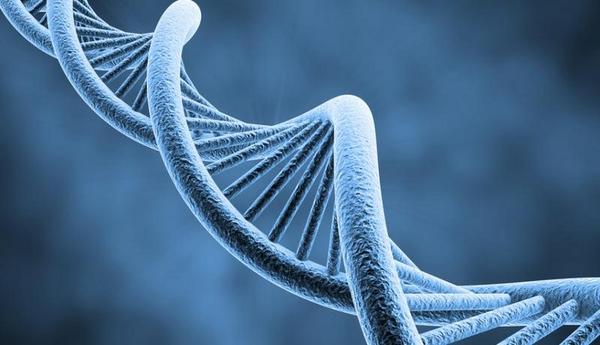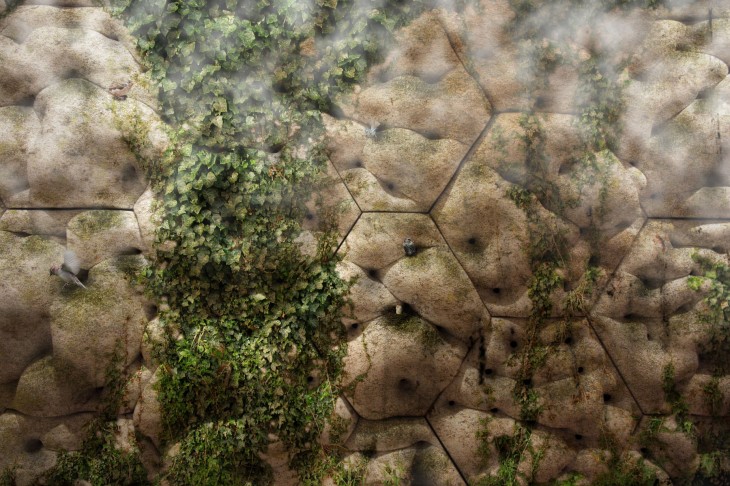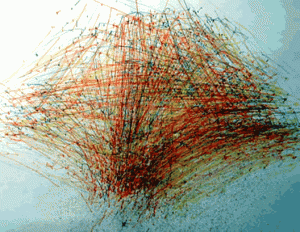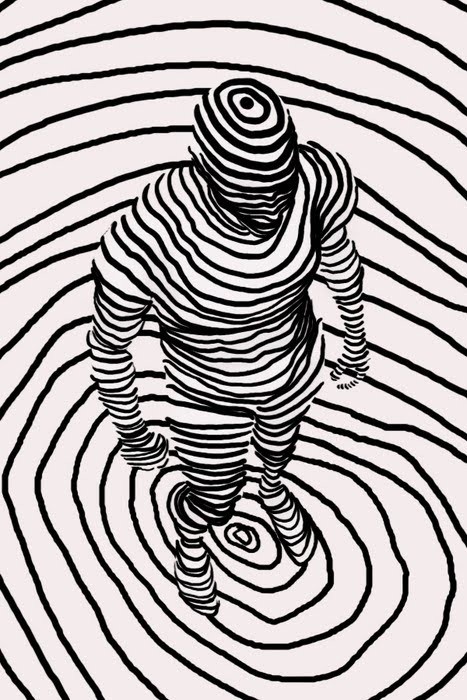By Steven Johnson. Chapter 2.
Summary.
This reading describes the behavior of ants, living cells, and people, and how their individual (inter)actions follow and provoke a global system behavior. Global behavior, local interaction.
There was a study which revealed a completely new way of understanding ant colonies and their behavior. The normal approach was to study several ant colonies, but instead they focused on one single colony over time. They discovered that colonies display a sort of an aging behavior, as a whole organism, through steps such as infancy, adolescence and matureness. Taking in count that colonies can live for 15 years and ants for 1 year, the question is how such simple organisms as ants can achieve a global result that far exceeds their live time and awareness.
It is assumed that ants wouldn´t be able to have an understanding of the colony as a whole or plan its development. So how is it that they know how to act individually, so that the colony survives? Local feedback, decentralized planning. This might be explained by noticing that ants have sort of tasks assigned. They just know they have to bring nutrients to the colony and defend their territory. Then their behavior depends on the interaction between the ants, sharing information about where is food, what nutrients they need, threatening and menaces, etc. The global behavior comes from this interaction between more simple activities of the basic units.
Code: nutrients=information
Similar behavior can be seen in the cell interaction of living organisms. The global actions begin with the interaction between the cells, and the transfer of nutrients (information) from one cell to the other through their membranes. In the embryo development, we can notice how cells define whether they will be heart cells, bone cells, blood cells, etc., based on the interaction and the information of the surrounding neighbor cells. DNA acts as a manual that indicates the cell how to become bone, heart, blood, etc., depending on the needs of their environment. As well as the ants, the global coordination depends on the exchange of information and a pre-established frame code of behavior for the basic units.
City simulation
Sims City is a good example of how a set of rules and units of interaction can evolved into apparently more complex systems. The video game depends on the exchange of information between the units of the city that, when enough, display complex global reactions depending on each unit´s feedback to/from the whole system. This is achieved by a logarithm and mathematics that act like an invisible operator that make thing happen.
Street view
Nature itself appears to have a code for doing things and solving problems, that also governs human behavior. We see behaviors in a galactic scale reflected in the atomic scale. Cities become with time into a huge organism of interactions. Humans of course we are more complex units than ants, cells, or computer bits. But the concept is the same. In this way city sidewalks are the spaces on which more of these interactions can take place. You have images, smells, sounds and exchange of information that keeps our brains active, and healthy. Nobody likes traffic jams, the interaction between people from one car to the other is poor compared to our capacity of information processing and interaction. Basically: it is boring and we don´t enjoy it.
Each space configuration that evolved in the cities like restaurants, plazas, parks, stadiums, offer a different code of interaction that we follow and under which things happen between people. This also happens with the recent virtual spaces which will be more and more important in the future. Complex systems offer the opportunity to fulfill our needs and even create new ones. When the interactions are encouraged, intelligence emerges from the exchange of information, so we can fulfill necessities more efficiently, enjoying the complexity.
The understanding of unit interaction is getting more complex through technology, so we can expect more complex and interactive technology in the future. It is just natural.
Personal Research Interest.
Information is the basis for interaction. Interaction defines intelligence. Emergent intelligence comes from the ability to read information and related it in different ways to obtain different results and more information.
Swarm intelligence is repeated throughout nature. We see can it in neurons, ants, shoals and bird flocks. Swarm intelligent systems show similar properties:
-Group of individuals.
-Relatively homogeneous individuals.
-Simple behavior of individuals, which act in response to local information from environment and other individuals.
-Overall behavior by the convention of the individuals.
The information is the element that promotes the action and interaction of the swarms. Information can be transmitted in different ways and channels like chemicals, physical interaction, movement…
Light for example, give us information in the way of color. But our intelligence is not limited to tell as that an apple is red. It tell us that it is ready to be eaten, and that it is going to be sweet. We get an idea of its flavor even before biting it. We already know its smell. The ability to record experiences takes intelligence one step further. New research is being done on how color and sound can relate to transfer information.
Can sound, music and color, be used as medium for information transfer, and what kind of intelligence can emerge from that?
By: Sebastian Alvarado Grugiel. Arquitecto.





